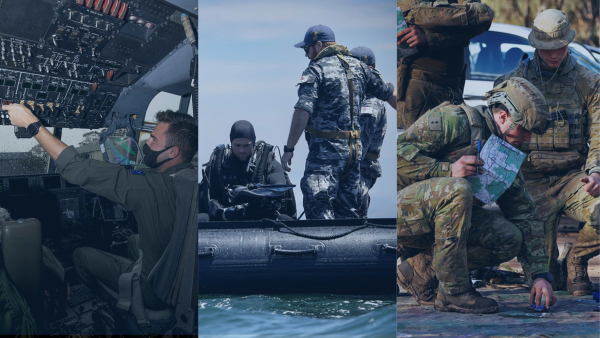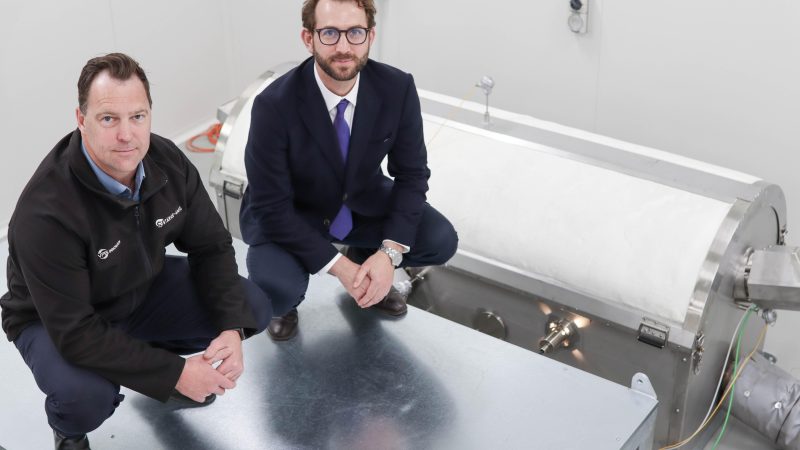Posted by Defence Teaming Centre on
The Australian Defence Force (ADF) could resurrect the Ready Reserves program to attract young people to the ADF. Ready Reserve scheme operated from 1991 with a vision to attract a high caliber of young Australians who would undergo a full year of full-time training with the ADF before proceeding to tertiary and other vocational training, or alternatively going into civilian employment. The young Australians would be contracted to the Ready Reserves unit for four years following their full-time training and serve 50 days (about one and a half months) each year.
The program, implemented by the Australian Labor Party, was abolished shortly after the Coalition’s victory in 1996. The reasons given for closing the program were blow-out costs and underperforming General Reserves.
Since the program’s cancellation, numerous attempts have been made to resurrect the program or a version of it. In 2007 the ADF Gap Year program was launched. Following a similar structure to the Ready Reserves program, the ADF Gap Year Program provided a full year of training with the ADF, however, there was no obligation to continue service after the year was completed. Instead, the program provided financial and other incentives for people to continue their service. Despite the program’s success in building the ADF workforce, it was cancelled in 2012 as part of the cost-saving measures announced in the 2012-2013 budget. The ADF Gap Year Program was re-established in 2014, but only for the Army and Air Force.
With the ADF looking to recruit 80,000 personnel in the next 17 years, implementing a version of the Ready Reserves program is not the craziest idea.
Tim Dore, Acting CEO of the Defence Teaming Centre, said the program has promise and provides a low-risk option for Australians considering a career in Defence.
“The 1990 program offered participants a training program post their one year that supported closing the skill gap.” Mr Dore said. “There is a benefit to the industry with people who may not want a full uniform career but like the challenges heading into the Defence industry and remaining in a reserve capacity.
“Funding is obviously a concern. History shows the program has continued to be cancelled after a couple of years due to budget blowouts, so we need to understand where the money is coming from.
“In February 2023, the government announced a reduction in the Defence Sustainment budget of 10 to 15 per cent, we have seen reductions and program cancellations in the Defence Strategic Review, and it has been explained by the Ministers that we cannot afford everything.
“The cuts in the sustainment budget will reduce access to equipment and platforms, potentially increasing the training burden with short-term trainees.
“These cuts in the sustainment budget will flow through to industry. Industry provides the lion’s share of the sustainment workforce, and again they are faced with variations in long-term contracts and effects on the workforce.”
Why is Defence considering resurrecting the Ready Reserves program?
First, the world is becoming an increasingly unpredictable and dangerous place. With the rise of new threats such as cyber-attacks and the current geo-political climate, it is more important than ever to have a Defence Force ready to respond quickly to emergencies. The Ready Reserves provided a pool of trained personnel who can be mobilised quickly in times of crisis, helping to ensure that Australia is always prepared for whatever challenges come our way.
Second, resurrecting the Ready Reserve program would be a cost-effective way to enhance Australia’s Defence readiness. The program provided a way to maintain a pool of trained personnel who could be called up quickly, without the need to maintain a large standing army. This would help to keep costs down while still ensuring that Australia is able to respond effectively to emergencies and crises.
Third, the Ready Reserve program would be a great way to support the ADF’s efforts to build stronger ties with the community. Members of the Ready Reserves were often drawn from the community, which helped to build closer relationships between the Defence Force and the wider public. By resurrecting the program, the Defence Force would be able to build on these existing relationships and forge new ones, helping to build support for the country’s Defence efforts.
Finally, the Ready Reserve program would provide an opportunity for individuals to serve their country in a meaningful way. Members of the program were often drawn from a wide range of backgrounds and professions, which helped to bring new skills and perspectives to the Defence Force. By resurrecting the program, the Defence Force would be able to tap into this diverse pool of talent and ensure that it has the best possible people serving in the Ready Reserve.
What would stop the program reaching its full potential?
Funding. As history has proven, funding has always been an issue, leading to the program being cancelled on multiple occasions. In the recently released Defence Strategic Review (DSR) it was recommended that a comprehensive strategic review of the ADF Reserves be conducted by 2025 and the review is to consider the reintroduction of the Ready Reserves program. Out of this review we expect to know where the funding will come from, however this does not mean that the program will be a success.
The government recently announced that they are implementing a Continuation Bonus Scheme, which is estimated to help Defence retain over 3,000 personnel. Under the scheme current ADF personnel will be offered $50k to re-enlist for another three years. This scheme is expected to cost $400M over the forward estimates and is part of the $19B the government has allocated to addressing the DSR recommendations. The DTC expects that the DSR allocated funding will not be available to help fund the hidden costs of the Ready Reserves program when, and if, it is implemented in the late 2020s.
As it stands there are no funding provisions to assist in the recruiting of 18,000 ADF personnel by 2040. With the 2023/24 Federal Budget predicating a deficit over the next fours years and government already cancelling and scaling back programs to help fund the AUKUS Program, it is likely government will need to make some seriously tough decisions on what else it can scale back on should it decide to proceed with the Ready Reserves program.
Peoples interest. Over the course of the End of the Gap Year program only 2,495 people participated, with 700 of those going on to serve full time. The program was estimated to cost taxpayers $306M over 10-years, however the program was cancelled after only five years due to budget constraints. Considering this was almost two decades ago, we can easily assume the cost of the program will have more than doubled and interest in a career in the ADF has declined given Australia’s changing social sentiment on the ADF. This could possibly lead to increased recruitment costs that weren’t required back in 2007 to 2012. It is also important to note that the ADF has a target of 18,000 new recruits by 2040, even if the Ready Reserves program was to be resurrected it might only contribute up to 22% of new recruits into the ADF.




